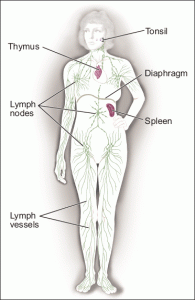Legendary Director Sidney Lumet Gone

Legendary director Sidney Lumet has died from lymphoma. The 86 year old is known for his work on films such as “12 Angry Men,” “Serpico,” “Murder on the Orient Express,” “Dog Day Afternoon,” “The Verdict”and “Network.” Although nominated for an Academy Award 4 times, he did not receive one until he was given an honorary “Lifetime Achievement Award” from the Academy in 2005. He also received the Directors Guild of America’s prestigious D.W. Griffith Award for lifetime achievement in 1993.
Non-Hodgkin’s Lymphomas (NHL) are a group of cancers of the blood system, specifically of the infection fighting cells called white blood cells, or lymphocytes. NHL is the fifth most common type of cancer (not including skin cancer) in the United States today. Over 66,000 adults and children will be diagnosed with NHL this year. Over 95% of those cases will be adults around 60 years of age. This group is separate from patients with Hodgkins Lymphoma, who carry a special kind of cancer cell- called a Reed-Sternberg cell, in their blood. For a discussion of Hodgkin’s Lymphoma, see Survivor’s Ethan Zohn, 35, has a very treatable form of cancer.
There are two types of lymphocytes in the blood- B-cells and T-cells, each with a different job within the immune system. B-cells normally help protect the body against bacteria or viruses by making proteins called antibodies. The antibodies attach to the bacteria or viruses and attract other immune system cells that surround and digest the antibody-coated germs.
There are several types of T-cells, each with a specialized job. Some normal T-cells help protect the body against “foreign invaders”- viruses, fungi,and some bacteria. T-cells can also release substances called cytokines that attract certain other types of white blood cells, which then digest the infected cells. T-cells are also thought to destroy some types of cancer cells, as well as the cells of transplanted organs. Some types of T-cells play a role in either boosting or slowing the activity of other immune system cells. Because there are many different lymphocytes, there are many different forms of NHL.
 Symptoms of NHL can be nonspecific, as well as identical to those of patients with Hodgkin’s lymphoma- chills, swelling of the lymph nodes (which are often but not always painless), fever, night sweats, unexplained weight loss, lack of energy, and itching.
Symptoms of NHL can be nonspecific, as well as identical to those of patients with Hodgkin’s lymphoma- chills, swelling of the lymph nodes (which are often but not always painless), fever, night sweats, unexplained weight loss, lack of energy, and itching.
Diagram left: The lymphatics and lymph node system.
While many effective treatment options exist, low grades of NHL usually recur, and some people go in and out of remission for years, some for 20 years or more. In certain patients with low grade disease, treatment may not be necessary until there are signs of progression. However, 30%-60% of patients with aggressive NHL can be cured. Many people treated for NHL will receive some form of chemotherapy, radiation therapy, biologic therapy, or a combination of these. Bone marrow or stem cell transplantation may sometimes be used.
Non-Hodgkins Lymphoma is becoming a disease on the leading edge of new research techniques that may be applied to other cancers. These include: antibody treatments, vaccines, tumor profiling (like a fingerprint), and new therapies that are biologically targeted to unique abnormalities specific to certain lymphomas.
For more information, click here, for our Resounding Health Casebook on Non- Hodgkin’s Lymphoma.




























0 comments